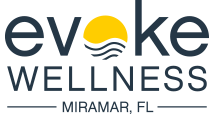With the explosion of novel psychoactive substances and a growing interest in psychedelic experiences, there has been a surge in the popularity of drugs like dimethyltryptamine, commonly known as DMT. This powerful hallucinogenic drug has captured the attention of researchers, enthusiasts, and those struggling with addiction. To better understand the effects of DMT and the challenges it may pose, it’s essential to delve into ”what is DMT,” its appearance, and the risks of addiction.
For individuals struggling with DMT use or psychological dependence, seeking professional help is crucial for recovery. Evoke Wellness at Miramar offers comprehensive substance abuse treatment programs tailored to the unique needs of each client. With a focus on holistic healing and evidence-based therapies, Evoke Wellness at Miramar aims to address the root causes of addiction and empower clients to build a lasting foundation for recovery. Call us at 866.931.9312 to learn more or fill out our online form.
What Is DMT?
So, what is DMT, and what does it stand for? Dimethyltryptamine, or DMT, is a naturally occurring psychedelic compound found in various plants and animals. Often referred to as the “spirit molecule,” DMT is known for inducing intense, mystical experiences and vivid hallucinations. Indigenous cultures in the Amazon Basin have used it for centuries as part of their religious and spiritual practices.
DMT is a powerful psychoactive substance that affects the brain by binding to serotonin receptors, which are involved in regulating mood, perception, and cognition. The effects of DMT are typically short-lived, lasting anywhere from 30 to 45 minutes if smoked, but the intensity of the experience can be incredibly profound. Users often report encountering otherworldly beings, traveling to alternate dimensions, and experiencing a deep sense of unity with the universe.
What Does DMT Look Like?
DMT can be found in various forms, including powder, crystals, and plants containing the compound. In its synthetic form, DMT is a white crystalline powder, but it can also appear yellowish or brown due to impurities. It has a distinct plastic-like smell that some users describe as similar to burning rubber or new shoes.
DMT is typically consumed by:
- Smoking
- Vaporizing
- Eating
- Drinking or otherwise ingesting
When smoked or vaporized, the effects are rapid and intense, while ingestion results in a slower onset and a more extended, milder experience. Regardless of the method of consumption, users should approach DMT with caution due to its potent and unpredictable effects.
Can DMT Addiction Impact Your Health?
While DMT can pose risks to one’s mental and emotional well-being, regular use of the drug can lead to psychological dependence, with users seeking out the intense and otherworldly experiences that DMT offers. This can result in users neglecting their daily responsibilities, relationships, and self-care as they prioritize drug use over other aspects of their lives.
Additionally, the potent and unpredictable nature of DMT experiences can lead to intense:
- Anxiety
- Paranoia
- Nausea and vomiting
- Increased heart rate and blood pressure
- Psychological distress, especially if users have a history of mental health issues.
Prolonged use of DMT may exacerbate pre-existing mental health conditions or trigger the onset of new ones. It’s also worth noting that, while rare, some users may experience a condition called hallucinogen persisting perception disorder (HPPD), where they continue to have visual disturbances and hallucinations long after the drug has worn off. This debilitating condition can severely impact an individual’s quality of life.
DMT Treatment Program at Evoke Wellness at Miramar
If you or a loved one is struggling with DMT addiction or dependence, don’t hesitate to ask for help. Embrace the opportunity to transform your life and begin your journey toward healing and self-discovery. Contact Evoke Wellness at Miramar at 866.931.9312 today to learn more about their personalized addiction treatment programs and take the first step towards a brighter, healthier future. Remember, the path to recovery starts with a single, courageous decision—make that decision now and rediscover your true potential.


